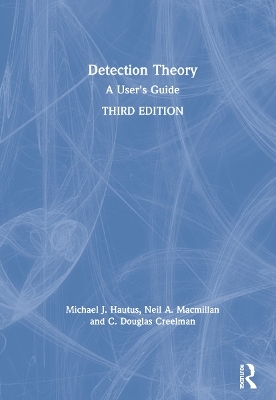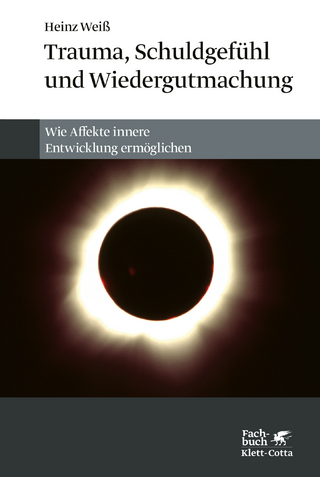
Detection Theory
Routledge (Verlag)
978-0-8153-6009-4 (ISBN)
Detection Theory: A User’s Guide is an introduction to one of the most important tools for the analysis of data where choices must be made and performance is not perfect. In these cases, detection theory can transform judgments about subjective experiences, such as perceptions and memories, into quantitative data ready for analysis and modeling.
For beginners, the first three chapters introduce measuring detection and discrimination, evaluating decision criteria, and the utility of receiver operating characteristics. Later chapters cover more advanced research paradigms, including: complete tools for application, including flowcharts, tables, and software; student-friendly language; complete coverage of content area, including both one-dimensional and multidimensional models; integrated treatment of threshold and nonparametric approaches; an organized, tutorial level introduction to multidimensional detection theory; and popular discrimination paradigms presented as applications of multidimensional detection theory.
This modern summary of signal detection theory is both a self-contained reference work for users and a readable text for graduate students and researchers learning the material either in courses or on their own.
Michael J. Hautus is Head of the Psychophysics Laboratory in the School of Psychology at the University of Auckland, New Zealand. His research interests include quantitative assessment of the functioning of the auditory system, modeling auditory, visual, and flavor judgment, and modeling cognitive processes involved in judgment. Neil A. Macmillan is a retired Professor of Psychology at Brooklyn College, USA. C. Douglas Creelman, deceased, was a Professor of Psychology at the University of Toronto, Canada. Both of them were privileged to study with founders of detection theory: Creelman with Wilson Tanner and John Swets at the University of Michigan, Macmillan with David Green and Duncan Luce at the University of Pennsylvania.
PART I. Basic Detection Theory and One-Interval Designs 1. The Yes-No Experiment: Sensitivity 2. The Yes-No Experiment: Response Bias 3. Beyond Binary Responses: The Rating Experiment and Empirical Receiver Operating Characteristics 4. Classification Experiments for One-Dimensional Stimulus Sets 5. Threshold Models and Choice Theory PART II. Multidimensional Detection Theory and Multi-Interval Discrimination Designs 6. Detection and Discrimination of Compound Stimuli: Tools for Multidimensional Detection Theory 7. Comparison (Two-Distribution) Designs for Discrimination 8. Classification Designs: Attention and Interaction 9. Classification Designs for Discrimination 10. Identification of Multidimensional Objects and Multiple Observation Intervals PART III. Stimulus Factors 11. Adaptive Methods for Estimating Empirical Thresholds 12. Components of Sensitivity PART IV. Statistics 13 Statistics and Detection Theory Appendices Appendix 1. Elements of Probability and Statistics Appendix 2. Logarithms and Exponentials Appendix 3. Flowcharts to Sensitivity and Bias Calculations Appendix 4. Some Useful Equations Appendix 5. Tables Appendix 6. Software for Detection Theory Appendix 7. Solutions to Selected Problems
| Erscheinungsdatum | 24.10.2017 |
|---|---|
| Zusatzinfo | 110 Tables, black and white; 130 Line drawings, black and white; 130 Illustrations, black and white |
| Verlagsort | New York |
| Sprache | englisch |
| Maße | 178 x 254 mm |
| Gewicht | 943 g |
| Themenwelt | Geisteswissenschaften ► Psychologie ► Allgemeine Psychologie |
| Geisteswissenschaften ► Psychologie ► Biopsychologie / Neurowissenschaften | |
| Geisteswissenschaften ► Psychologie ► Verhaltenstherapie | |
| ISBN-10 | 0-8153-6009-6 / 0815360096 |
| ISBN-13 | 978-0-8153-6009-4 / 9780815360094 |
| Zustand | Neuware |
| Haben Sie eine Frage zum Produkt? |
aus dem Bereich


